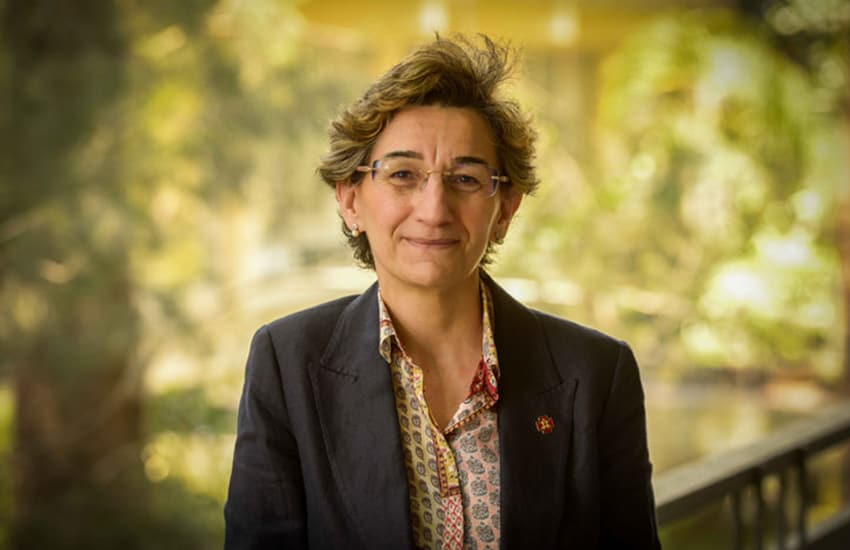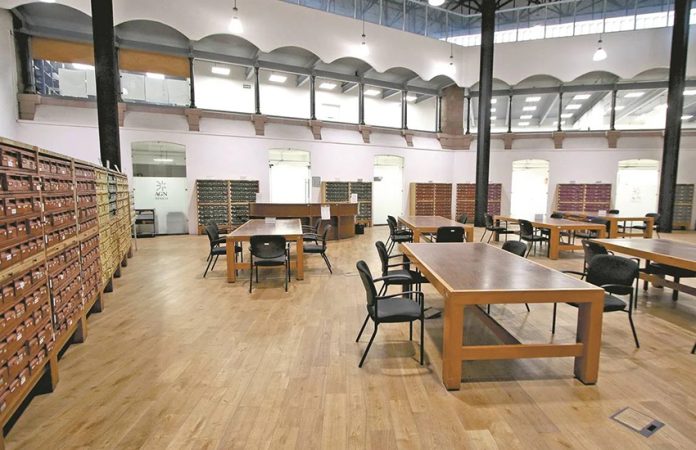A group of academics-turned-detectives in Mexico and Spain helped stop a New York auction house’s scheduled sale in September of a 1521 letter sent to Spanish conquistador Hernán Cortés, according to a report published Thursday by the news agency Reuters.
The same group — whose members include María Isabel Grañén Porrúa, a scholar of 16th-century Spanish colonial books and a prominent Mexican cultural figure, Mexico-based Dutch philologist Michel Oudijk and María del Carmen Martínez, an esteemed Cortés scholar in Spain — has also unearthed nine other Cortés-linked papers that were auctioned in New York and Los Angeles between 2017 and 2020 after being stolen from Mexico’s national archives.
The “rare treasure” that the Swann Galleries auction house was planning to sell was a 1521 letter to Cortés from allies, urging him to avoid a royal Spanish emissary who intended to strip him of his powers. The missive to the leader of the Spanish forces that conquered what is now modern-day Mexico was expected to fetch US $20,000 to $30,000 at auction, but the “plucky” group of academics “helped thwart the sale,” Reuters said.
Through reviewing her personal collection of thousands of photographs of Spanish colonial documents, Martínez, an academic at Spain’s University of Valladolid, was able to determine that the letter was once held at the National Archive of Mexico (AGN) in Mexico City, which she visited in 2010 and 2014.
The other academics have been searching online catalogs of global auction houses to find Cortés-related documents for years, and one of them recruited the Spanish scholar to assist their efforts.

Martínez saw that the letter Swann Galleries was planning to sell was the same document she had photographed at the AGN years earlier.
The “penman’s swooping cursive and a small triangle-shaped chunk of parchment missing from the left-hand margin” left no doubt in her mind that the document shown on the auction house’s website was the one she’d seen. The academics made their concerns about the provenance of the letter public in early September, and Swann Galleries canceled its September 24 auction after Reuters made inquires.
The group also drew up a list of nine other Cortés papers sold in recent years, of which Martínez had photographed seven.
Officials at the AGN told Reuters that at least eight of those documents, as well as the 1521 letter whose sale was foiled, were missing from the national archives. They said that some of the documents appeared to have been surgically removed, as if with a scalpel, from old books in which they had previously been bound.
“It’s scandalous,” said Grañén, the colonial books scholar. “We are very worried, not just by this theft, but also about all the other robberies and looting of national heritage.”
Swann Galleries, which put a total of six Cortés papers on the block between 2017 and 2020, denied wrongdoing.
“Knowingly moving stolen material through an auction house is just about the silliest thing a person can do,” said Alexandra Nelson, the auction house’s chief marketing officer.
London-based auction house Christies, which put two Cortés papers up for auction in the United States, told Reuters it carefully vets the provenance of all items it sells. Bonhams, also of London, and Los Angeles auction house Nate D. Sanders, which sold one Cortés manuscript each, declined to comment or didn’t respond to the news agency’s questions.
Robert Wittman, a former special agent and founder of the Art Crime Team at the U.S. Federal Bureau of Investigation (FBI), said that major auction houses are not doing enough to prevent the sale of looted items.
“They are not in the business of recovering stolen property or protecting cultural property,” he said. “They’re in the business of buying and selling.”
Reuters also revealed that Mexico’s Foreign Ministry (SRE) has sought the assistance of the United States Department of Justice to repatriate the 10 manuscripts.
Reuters managed to identify one of the buyers of the manuscripts, who told the news agency that he had returned it to the auction house.
“I have returned the letter, acquired in good faith, to Swann Galleries,” Brazilian art historian Pedro Corrêa do Lago said in an email, referring to a 1538 letter from Cortés to his property manager that Corrêa do Lago bought for $32,500.
Swann Galleries declined to comment on those remarks, Reuters said.
The legal director at the AGN, a cash-strapped institute that Mexican academics have long warned is susceptible to theft, told Reuters that the archive is “not ruling out any hypothesis” about the removal of the Cortés papers.
“We are not discounting the possibility that the person responsible for the thefts of these documents was a manager, a worker or a researcher,” Marco Palafox said.
He said the AGN didn’t contact Swann Galleries itself to stop the sale of the missive to Cortés last September because it was unable to quickly establish that the document, and others, were in fact missing from its collection, even though the match between Martínez’s photos and those posted to auction house websites were compelling evidence.
Palafox said that only about 40% of the AGN’s hundreds of thousands of documents have been catalogued, and therefore finding documents — or checking if some are missing — can be a challenge.
However, the AGN obtained assistance in the form of a collection of microfilm images recorded at the archive in 1993 by the Genealogical Society of Utah, a Mormon nonprofit now known as FamilySearch that has photographed archive documents around the world to help Mormons and others trace their ancestry.
Palafox said that among the nonprofit’s images — available online — AGN staff found photographs of nine of the 10 Cortés papers that had been auctioned in recent years. That allowed the staff members to locate where those documents should be, and they discovered that all of them were missing, the legal director said.
Palafox said he spoke with United States investigators on a video call last October and showed them images of the Cortés documents from the auction house websites alongside those belonging to the nonprofit and to Martínez.
“This was enough to get their attention,” he told Reuters.
A senior source at the SRE told the news agency that the United States Department of Homeland Security, the U.S. State Department and a federal attorney’s office in New York state were working together to recover the stolen documents that were auctioned off in recent years.
Palafox said the Mexican Attorney General’s Office is conducting its own probe into the theft of the documents.
Wittman, the former FBI agent, told Reuters that U.S. authorities would likely subpoena the auction houses that sold the Cortés documents in order to identify the individuals that put them up for sale as well as those who transported them. The strategy involves going down the chain until investigators arrive at the suspected thieves in Mexico, he said.
Source: Reuters (en)
